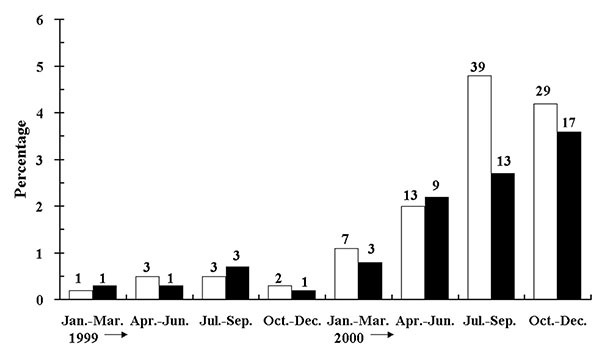Volume 9, Number 3—March 2003
Research
Emergence of Ceftriaxone-Resistant Salmonella Isolates and Rapid Spread of Plasmid-Encoded CMY-2–Like Cephalosporinase, Taiwan
Figure 2

Figure 2. Prevalence rates of the blaCMY-2–like gene among clinical isolates of Escherichia coli (□) and percentage of the new cases infected with or colonized by the E. coli isolates producing the CMY-2-like enzyme among patients with E. coli isolates (■), 1999 and 2000. Numbers over bars denote the numbers of isolates with a CMY-2–like β-lactamase or the numbers of patients with these isolates.
Page created: December 07, 2010
Page updated: December 07, 2010
Page reviewed: December 07, 2010
The conclusions, findings, and opinions expressed by authors contributing to this journal do not necessarily reflect the official position of the U.S. Department of Health and Human Services, the Public Health Service, the Centers for Disease Control and Prevention, or the authors' affiliated institutions. Use of trade names is for identification only and does not imply endorsement by any of the groups named above.